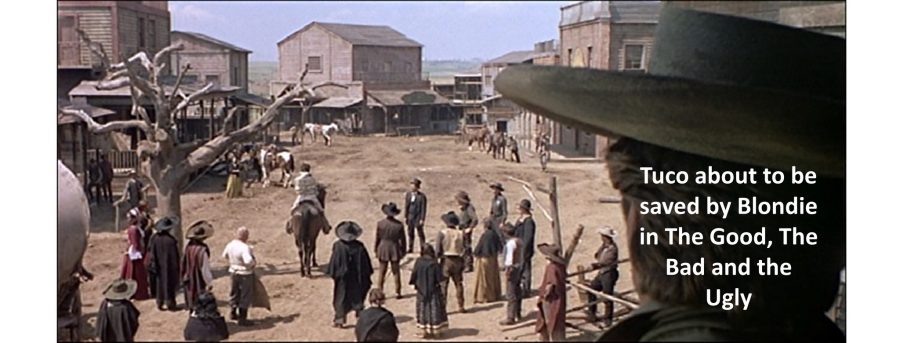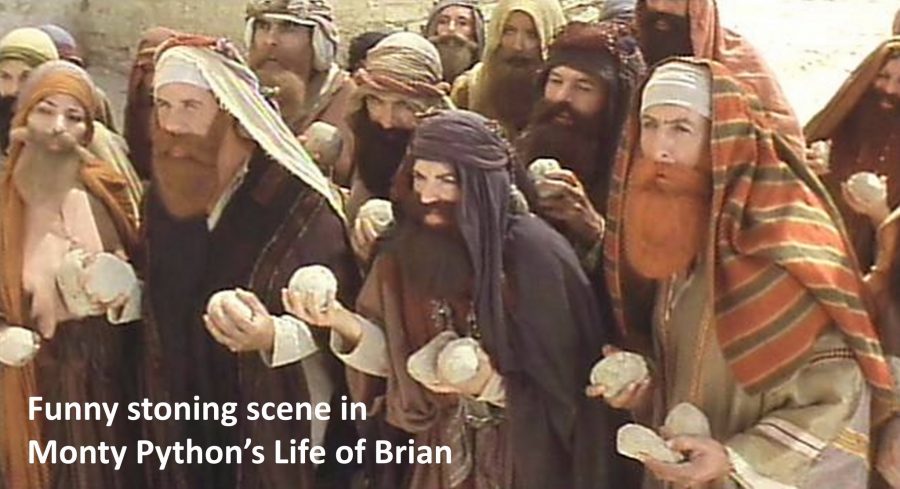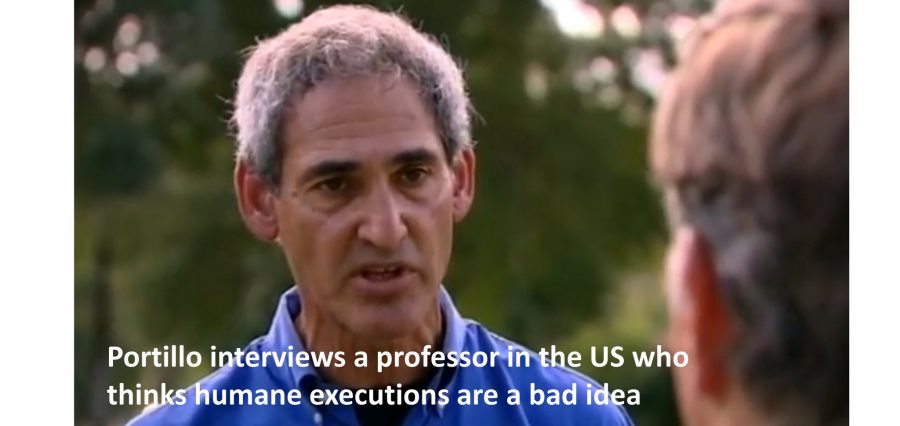The Evils of Capital Punishment and Mob Justice

Shôn Ellerton, Nov 23, 2021
My thoughts on the evils of capital punishment and mob justice.
This time, I turn the pen on the rather heavy subject of capital punishment and its intrinsically linked partner, mob justice. To be honest, before setting out to write this piece, I had no idea how to start, so I’ll begin with my overall opinion of capital punishment. The opinion being that it is heinously and morally repugnant. The very thought of it sends shivers up my spine and begs the question that how, in a society in which we have developed our technology to make, in general, a better place for us to live in, we still have capital punishment in many areas of the world.
Mob justice is also vile and could be regarded as the evil twin of capital punishment because when the two are combined, the possibility of an irreversible miscarriage of justice is far greater. The infamous case of the electrocution of Ethel Rosenberg during the 1950s is a salient reminder of this. There is no question that high-profile court cases attract mobs, having been created by news, hearsay, or social media. Indeed, without the news, there would be no mobs. The mechanisms of the justice system can, and often is, tampered by the excesses of mob mentality fuelled with raging emotions, overarching narratives, and irrational thinking, much like being part of the high-energy crowd at a major sports event. The difference, of course, being that in a sports event, one team is going to lose with no one getting hurt and in the case of a court trial, it could mean the life or death of the accused. Mob justice, to put it mildly, is very dangerous, and it is not uncommon that a court case will mirror the premature verdict of the madding crowds. It is well to remember that judges and juries are comprised of people having a mortal fear of the consequences of an unpopular decision.
What kind of person does it take to watch an execution?
Immortalised by films and television, such as in the Good The Bad and the Ugly, the scene where Clint Eastwood shoots the hats off the curious bystanders awaiting for the hanging of Tuco.
In 1492 The Conquest of Paradise, the harrowing scene in a square full of curious gatherers watching people being burned alive at the stake by the Spanish Inquisition.
And of course, the funny satire, Monty Python’s Life of Brian, in which women (dressed as men) were itching to have a go at taking part in a stoning, the attendance of public executions are generally popular, but why?
Without resorting to misanthropy, human nature is, in general, crude and barbaric which is why, in a civilised society, we try to knock off the rough edges of our character through education and the teachings of morals and virtues. Yet, it is human to be innately curious, especially of the unknown, so aptly described by the myth of Pandora’s box.
My first encounter as a child watching a fictitious execution may probably have been an old 1977 Tom Baker Doctor Who episode portraying a dystopian high-tech future called The Sun Makers in which the capital punishment was being inserted into a coffin-shaped device and then killed off by jets of steam.
I don’t remember the program showing any graphic detail but the implication of such a horrible way of dying left a lasting impression on me since childhood. Various trips to waxworks museums depicting scenes of torture and execution further accentuated this. The Chamber of Horrors in the Madame Tussauds waxworks museum in London was the most popular part of the museum until it was axed in favour of a much more toned town Sherlock Holmes experience. Despite the warnings and the option of a detour route for those who were faint of heart, the ‘do-gooders’ had their way and had it removed. Arguably, it should have remained as a salient reminder how not to conduct ourselves within a civilised society.
Watching a living creature die is distressing for most. Most of us would rather not see how our animals are killed to feed us and we hope that the method of killing causes the least amount of distress to the animal. Those who work in animal laboratories often try to disconnect with their emotions as much as humanly possible to overcome the feelings of distress. I once visited such a place in the University of Texas in Austin called the Animal Research Center (ARC) by my sister who once worked there. Its nefarious and subtly apt nickname was simply, ‘The Ark’. I remember been shown the area in which rats were put down by being inserted into a clear plastic box in which carbon dioxide was injected. Why carbon dioxide and not carbon monoxide or some other form of hypoxia was not clear to me as death by carbon dioxide induces suffering much like drowning.
Back in 2003, on a trip to Madrid, I was curious and went to a bullfight. Picture this. A sunny day with lots of people and families with children sucking on lollipops, all having a wonderful time. I walked with them into the stadium in which we sat down waiting for the big event. I was informed that there were to be six bullfights, one after the other. Not long after sitting down, the first bullfight commenced and in quite a short period, that bull was being mauled and mutilated by several men sporting brightly coloured clothes armed with a variety of weapons including spears and daggers. The end of the bull was nigh, who was, in no doubt, suffering terribly from its wounds, eventually to be finally smote by the sword of the matador followed by a horse-drawn cart in which the legs of the dead bull were tied and dragged quickly away for the next victim. Turning my head and watching the laughing and happy spectators, including the kids relishing their sweets, I reeled with nausea and left the arena far quicker than I had arrived. I never had any trouble with a kangaroo or deer being shot by a rifle, but this was stomach-in-your-throat simply awful.
And then we have those who witness capital punishments. My father once said to me, whilst on business in Saudi Arabia back in the 80s, that he was invited to witness a public beheading in Riyadh. This barbaric event took place on a Friday at ‘Chop-Chop’ square starting with a series of amputations using swords, ending with the finale of someone being decapitated. Paradoxically and sickeningly, the ambulances, equipped with the most modern technology, were to hand to see to attend to those who were about to die from losing blood after having had their appendages cut off! I’m not sure what thoughts were running through my father’s head at the time, but if what he told me was true, this must have been a truly disturbing sight to behold. But many of those who attend these brutal events come back time and time again, presumably on the basis that they become less emotional to it each time.
In the Western world, the United States raises its head above the parapet shamefully in the world of capital punishment spectatorship, especially with the prolonged rituals and more exotic methods of death that are employed from state to state especially that of electrocution and gas. Thankfully, the number of executions has dropped significantly from its peak around the late 1990s and early 2000s with many states recently calling for a moratorium of the practice under Biden’s administration. There have been many botched attempts at execution, some of which made extremely gruesome viewing for the witnesses, notably the ones by the electric chair and the gas chamber.
What kind of person does it take to watch an execution? Is it someone who can’t distinguish between reality and fiction? Is it someone who possesses a vicious streak of sadism? Is it someone who takes glee from watching someone suffer out of revenge? A combination of all, perhaps? I, honestly, really don’t know.
Being put to death is irreversible
Having worked in the justice system since 2019, I have been privy to cases which, had they made the light of day in all its details before due process could take place, would unnecessarily sensationalise and infuriate a mob demanding immediate justice seeking an ‘eye-for-an-eye’ retribution, especially from those who practice in faiths in which this doctrine is inculcated. As alluded to above, high-profile cases, especially those which are permitted to be filmed and aired before the verdict has been delivered, have a far greater potential of justice being partial and miscarried out of sentiment and fear from threat to those working on the case, particularly so to the judge and jury. As a juror, making the right choice may not be so easy if the narrative of the mob is against you. Judges and jurors are easily hunted down by curious mobs in high-profile cases, and it is not uncommon for death threats to be sent by those not in favour of the outcome of a trial.
I once met Henry Keogh here in Adelaide, a man who spent more than 20 years behind bars convicted of murdering his fiancé, the motive having been established at the trial of taking out several insurance policies on the event of her death. It turned out that there was enough evidence more than twenty years later to quash his conviction. He was released in 2014. That’s twenty years! Considering the average time it takes in the US from sentencing to execution date on death row, should Keogh had been convicted in a US state in which capital punishment was practiced, it may have been highly likely that he would have been executed an innocent man. There have been many counts of those who were executed and then deemed innocent on the later discovery of pertinent evidence, some of which may have been obfuscated or tampered with at the time of conviction.
The injustices of a mob watching a live trial
I am highly sceptical that a fair and impartial trial can be delivered when a gaggle of news media outlets are covering the trial live for the public, especially from those whose newscasters overlay their narratives on their opinions on the trial. This seems a terrible threat in delivering a fair and impartial verdict.
Watching a fictional courtroom trial on TV or in the movies often makes for good entertainment value. The most interesting series I started to watch as a 10-year-old was an old British series called Crown Court that aired from the mid-70s to the mid-80s. Each week, in half-hourly shows, featured a case ranging from the not-very-serious to the most serious as in the episode called Treason in which a white African was sentenced to death by hanging. The acting was quite accurate as to what would likely happen in the courtroom, but the ingenious side of the show was that the jury comprised of volunteers who made the decision whether the accused was guilty or not. Naturally, every case had to be scripted to have an alternate ending depending on whether the accused was guilty or not. Ingenious! It was very addictive to watch, even as a child. However, these are fictional cases.
Real trials being televised are, in my opinion, a real threat to fair and impartial justice. As of writing, Kyle Rittenhouse was acquitted of five counts relating to the homicide of two others during the Kenosha riots. I’m not going to debate whether Kyle should have been convicted or not, however, there is no doubt in my mind that covering this trial live for the public should not have taken place. The mob had already made its decision, and nothing would sway them regardless of the verdict. The most deplorable act I remember during the trial was when the MSNBC crew took it upon themselves to follow the jurors who were being taken to their hotel in a van. They were caught with tails between their legs by the police and rightfully banned from entering the courtroom for the remainder of the trial.
The overarching narrative pervasive in most mainstream media outlets was that Kyle Rittenhouse was guilty and that justice was not served when he was acquitted. This kind of collective thinking is extremely dangerous. Should we allow our mainstream media to be the judge, jury, and executioner? How damned facetious is it for the mainstream media to think they are exercising better judgment than the workings of the judicial system!? We can go back decades ago when the mob took it upon themselves to decide that Ethel Rosenberg, accused of working with her husband, Julius, in trading US secrets with the Soviets in the 1950s, should be put to death by electric chair. By the way, the execution did not go well, and it took three times to shock her to death after much burning of human air and flesh. As for the political party in power, it was the Republicans during that time, and many of them wanted her dead. Ethel Rosenberg, which, unlike her husband, Julius, had scant evidence of her committing the capital crime punishable under the Espionage Act of 1917. However, Ethel was not a particularly likeable woman from the mob’s perspective or even mine to be honest. She was obstinate and, as shallow as it sounds, not of an attractive disposition and to add to the collective witch burning, she rather chose to die leaving the children motherless than to betray her political ideals. To this day, her sons have been trying through various presidencies up to Biden, with no success, to exonerate her.
Volunteering for death
Something that took me by surprise is when I read that out of nearly 1,600 state executions in the United States from 1977 to 2021, 150 were from those who volunteered or wanted speedy expedition to be put to death, mainly by requesting to waiver further appeals processes. The link here, has an interesting summary of those who requested death and why; reasons ranging from being tired of endless appeals to feeling guilty of wasting taxpayers’ money (yes, unbelievably) to those who ‘want to do the right thing’ for their sins.
Being of a somewhat pragmatic disposition, I uphold the notion that if someone convicted wants to kill himself, whether it be through assisted dying or suicide, why do so many of our justice systems deny that right? Why accommodate a prisoner with taxpayers’ money if the prisoner chooses to die? After all, I can go out to the shops, purchase a bottle of liquor and a stash of paracetamol. I can sit in my car in an enclosed garage with the engine on. Why all the precautions to prevent a prisoner from killing himself? This is, of course, subject to it being lawful to allow the prisoner in making the choice to do so, otherwise those correctional institutions would be held liable for the prisoner’s death. One answer to this is that dying ‘easy’ isn’t good enough and that the convicted should suffer. This barbaric mode of thinking is not uncommon and one that recoils me with disgust.
The cost of putting someone to death
One may question how much does it cost to execute someone? The short answer, at least in the United States, is a lot. Based on information provided by the Death Penalty Information Center, it costs approximately USD $3m per execution, roughly three times the cost of housing a prisoner in a single cell for 40 years! Most of this cost is to pay for the expensive legal appeals processes that could take place for several years between the sentencing and execution dates.
If the cost of putting someone to death is so high, then why do it?
Death penalty as a deterrent
One point of view from those who condone the death penalty is that it is a deterrent against crime. But where is the evidence? From data gathered by FBI Uniform Crime reports between 1990 and 2003, the evidence suggests the reverse! Furthermore, as indicated by World Bank data, the US murder rate has declined per capita as a general trend from the mid-90s to 2021 from around 9 per 100K population to around 5 per 100K. Bear in mind that the height of state execution in the United States took place in the 1990s and the early 2000s.
I’ve not seen any convincing data that leads me to suggest that capital punishment is a deterrent against crime.
Death penalty as an instrument of revenge
The only reason left that I could think of for putting someone to death is to satisfy the living victims who want nothing other than the convicted to suffer death.
I must recount one of the most poignant documentaries ever to be made which was aired on British television during 2008. It is titled How to Kill a Human Being, a Horizon documentary (see link at bottom of article) starring Michael Portillo, an ex-politician who took it upon himself to discover the perfect ‘killing machine’. This 45-minute long documentary is a must watch.
In the documentary, he visits laboratories in which they conduct tests on how much rope is required to snap a neck without decapitating it. How much voltage and current (using an already dead pig) is required to electrocute someone.
Recalling accounts from those who suffered under fiery pain with the muscle relaxant during an operation with pancuronium bromide, the second of the three ingredients which make up the lethal injection. He also takes part in gassing himself (with a non-lethal irritant gas) to simulate what it would be like in the gas chamber, and as much as he tried not to resist (a strategy advised for those to be executed), he contested that it was simply impossible to do so. Finally, he carried out monitored and controlled experiments to himself of nearly dying from hypoxia by being asked to take off his oxygen mask in an altitude chamber simulating the effects of being in an oxygen-deprived environment. He was asked to perform a simple exercise of putting a plastic shape inside a child’s toy which he simply could not do. At which point, he was asked to put the mask on, only to be saved at the last minute by the guy monitoring him when he quickly donned it back on for him. He recovered in seconds.
He then visited this Indian doctor who concocted a device, very cheap to make, which induced the same effect as being in the altitude chamber with nitrogen. In effect, it was concluded that putting someone to death can be done humanely and cheaply. He took this idea to the United States in which he interviewed a doctor who invented the lethal injection and a professor who condoned capital punishment. The doctor was visibly disturbed, perhaps from devising the method itself, but more from the ineptitude from those delivering it. Doctors, nurses, and others who have undertaken the Hippocratic Oath refuse to undertake this unpleasant task. He next asked the professor who was asked if this was a good way, being cheap and humane, to execute a person. His response was that of a hateful vengeful advocate of wanting the convict to suffer before dying. It was spinechilling to watch.
There is hope at least
From 1977 to 2021, there have been around 1,600 executions, most of which, took place between 1995 and 2003. The numbers have drastically dropped from 98 during 1999 to 16 in 2016. Furthermore, during 2020, more states, including that of Colorado, have called a moratorium on state executions. Although lethal injection can be botched badly, it can’t be compared to the sheer brutality of the electric chair or the gas chamber, both instruments of execution (or, indeed torture), which harbour a very small fraction of total executions. Another silver point of state execution is the ever-increasing period between sentencing and execution, of which most of the cases are converted to life sentences.
Perhaps we will discover, in the not too distant future, a civilised society in which capital punishment is a remnant of the past. I fear that capital punishment will still be retained in some countries of the world, but this reflects, in my opinion, that those societies are yet to join the civilised world.
Perhaps we could also address how to deal with mob justice. Why do we allow the press to exacerbate it by inculcating irrationality, hysteria, and revenge in the people?
One thing is certain. The combination of capital punishment and mob justice is evil.
Further reading and viewing
Interesting facts and figures can be found at the following websites.
https://www.pewresearch.org/ (search under capital punishment)
https://documents.deathpenaltyinfo.org/pdf/FactSheet.pdf (Facts about the Death Penalty factsheet)
The complete video of How to Kill a Human Being with Michael Portillo https://vimeo.com/83750163
















